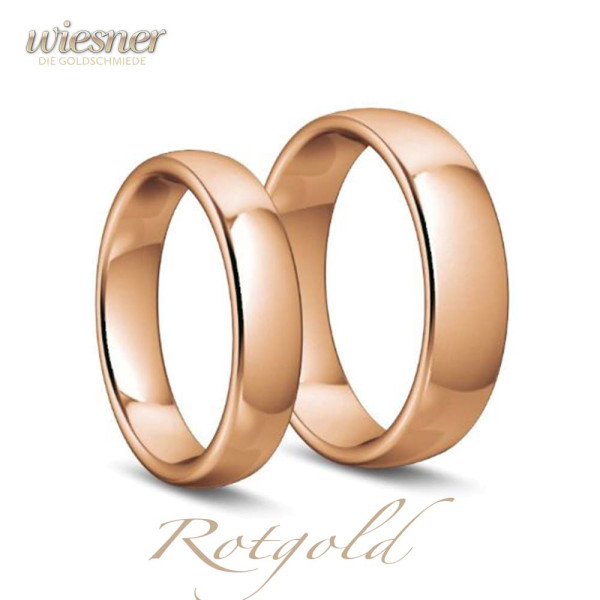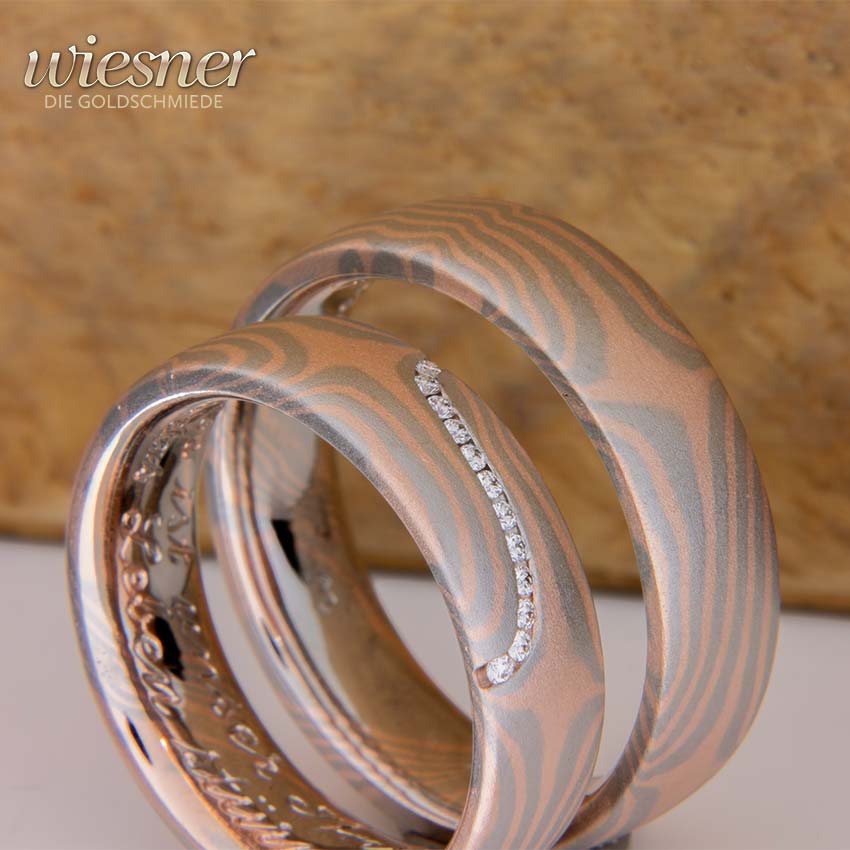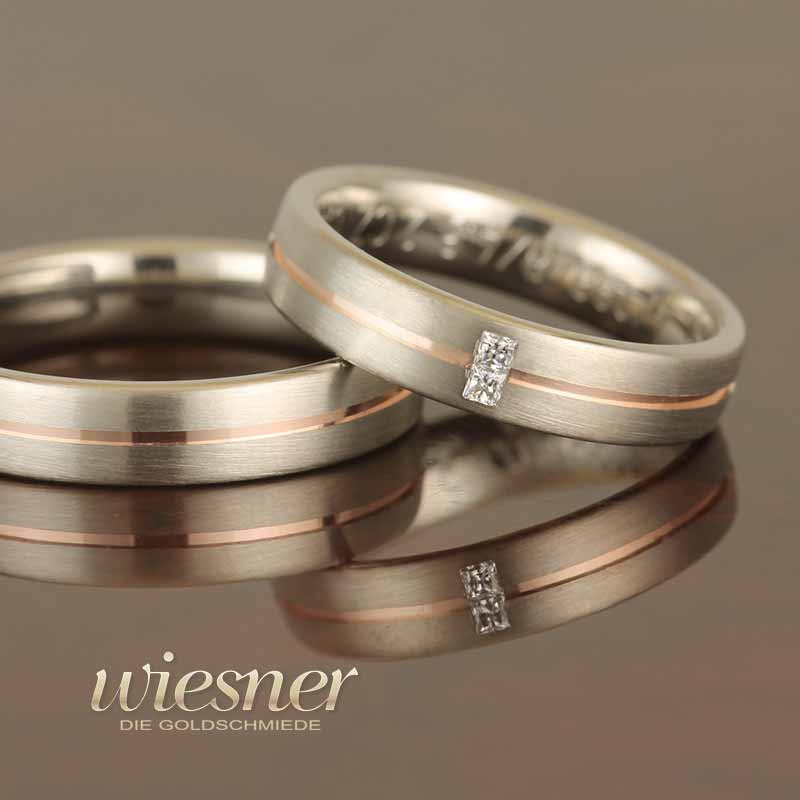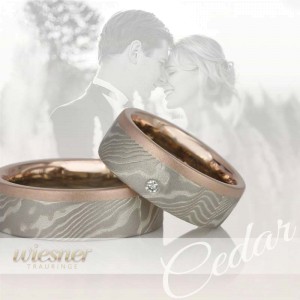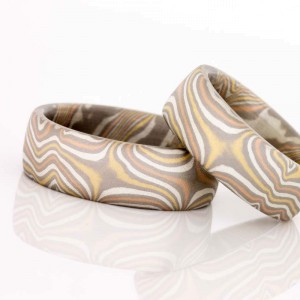Red gold: the fascinating world of the red gold alloy
Red gold, a remarkable gold alloy, is known for its characteristic red coloring and fascinating properties. This unique alloy consists of fine gold, copper and occasionally a small amount of silver to improve its mechanical workability. The high copper content, which is significantly higher than that of silver, gives red gold its eponymous "red" color and increases the hardness of the material.
The composition and properties of red gold
Red gold is one of the oldest gold alloys and has gained popularity over the centuries. The main components of this alloy are fine gold and copper. The copper not only gives red gold its characteristic color, but also increases the strength and durability of the material. Silver is sometimes added in small quantities to improve the mechanical properties and facilitate processing.
The exact composition can vary, but typically red gold contains around 75% fine gold (18 carat), 22.25% copper and 2.75% silver. However, this composition can be adjusted depending on the desired shade and application. Red gold can also be found in lower carat levels, such as 14 carat or 9 carat, with a correspondingly higher copper content. More about gold alloys.
The color palette of red gold
The shade of red gold varies depending on the ratio of alloying metals. A higher copper content leads to a more intense red color, while a higher silver content can lighten the hue. This allows for a wide range of red tones, from a delicate rose gold to a deep, rich red gold. This variety of color makes rose gold a popular choice for jewelry designers who want to create unique and eye-catching pieces. Chemical composition of gold alloys.
Red gold in jewelry making
Rose gold is an extremely versatile material and is used in a wide variety of jewelry, from rings and pendants to earrings and bracelets. Its warm, reddish color provides a beautiful contrast to other metals such as silver, white gold or palladium. This makes rose gold particularly attractive for creating multi-colored pieces of jewelry and artistic designs.
A notable example of the use of rose gold in jewelry making is the technique of mokume gane. This ancient Japanese forging technique, which literally means "wood grain metal", creates a unique, grained pattern reminiscent of the grain of wood. Rose gold is often used in Mokume Gane wedding rings as it provides a striking contrast to the other metals and enhances the beauty of the patterns.
An example of the Use of rose gold in wedding rings, together with palladium 500.
Regional preferences and historical designations
The popularity of rose gold varies regionally, with certain shades of gold being preferred in different parts of the world. In Eastern Europe and Southern Europe, darker and more intensely colored reddish gold alloys are particularly popular. This preference is also reflected in the cultural and historical significance of red gold.
In the former GDR, red gold was colloquially referred to as "Russian gold". This term is still sometimes used today in southern Germany as "Türkengold". "Russian gold" refers to a special red gold alloy with an unusual fineness of 583. This alloy is easily recognizable by its slightly lighter color and special fineness. This historical designation reflects the cultural influences and the history of gold processing in these regions. History of gold jewelry in Europe.
The significance of red gold today
Nowadays, red gold is a symbol of elegance and individuality. It is often used in high-quality jewelry and is popular with jewelry lovers and designers alike. Rose gold jewelry is often seen as timeless and classic, with a modern twist that sets it apart from traditional yellow or white gold jewelry. Trends in the jewelry industry.
Rose gold is also a popular choice for engagement rings and wedding bands. The warm color of rose gold symbolizes love and passion, making it an ideal choice for these meaningful pieces of jewelry. Many couples choose rose gold for its uniqueness and its ability to combine classic elegance with modern style.
Example of Use of red gold in wedding rings as an inlay in a ring band of White gold.
Care and maintenance of red gold jewelry
As with all valuable pieces of jewelry, rose gold jewelry requires careful care to preserve its beauty and shine. Here are some tips for caring for rose gold jewelry:
-
Cleaning: Red gold jewelry should be cleaned regularly to remove dirt and debris. A mild soap solution and a soft cloth are ideal for cleaning at home. Avoid abrasive cleaning agents that could scratch the surface of the gold. Jewelry cleaning instructions.
-
Storage: Store red gold jewelry separately from other pieces of jewelry to avoid scratches. It is best to use a soft jewelry box or a jewelry bag.
-
Avoid chemicals: Avoid contact with harsh chemicals, perfumes and hairsprays, as these can damage the gold. Take off your jewelry when you do housework or go swimming.
-
Professional maintenance: Have your rose gold jewelry checked and polished regularly by a professional to remove scratches and maintain its shine. Specialist stores for jewelry care.
All in all...
Rose gold is a fascinating and versatile gold alloy that stands out for its unique color and outstanding properties. From jewelry making to cultural and historical aspects, rose gold offers a rich palette of possibilities and meanings. Whether as a stunning contrast in multi-colored designs or as a symbol of love and passion in engagement and wedding rings, rose gold remains a timeless choice for those who appreciate beauty and individuality in their jewelry.

